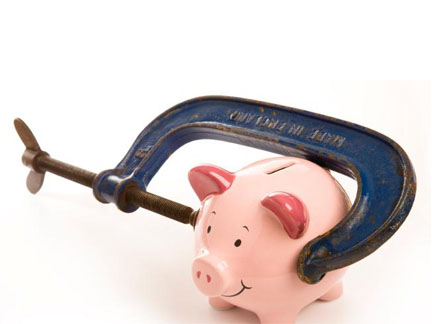
HOUSEHOLDS appear to have become even more money conscious and content to wear last year’s summer fashions, while preferring to eat at home rather than dine out, new data suggests.
Retail spending fell by a hefty 1.1 per cent in October compared to the previous month, the biggest fall since July 2009 when the impact of the federal government’s stimulus cash handouts was fading.
“These figures should be a reminder to the (Reserve Bank) that the rate rise in November was heavy-handed and premature,” Australian Retailers Association (ARA) executive director Russell Zimmerman said in a statement.
Treasurer Wayne Swan said as Wednesday’s national accounts showed, households were taking advantage of strengthening incomes to save a bit more and pay down personal debt.
“It is not surprising that consumers are being a little bit more cautious with their spending given the global economic conditions we have been seeing in recent times,” he said in a brief statement.
But opposition treasury spokesman Joe Hockey said the figures show how challenging rising interest rates are to small business and consumers.
“The best way to reduce interest rates in Australia is for the government to stop spending so much money,” he told reporters in Sydney.
Economists’ forecasts had centred on a 0.4 per cent increase in retail spending in October.
Macquarie Research economist Ben Dinte said the sharp fall in spending was a surprise given that it came before the unexpected jump in mortgage rates in November.
“Taken at face value, they provide a very weak starting point for GDP growth in the December quarter,” Mr Dinte said.
The data follows hot-on-the-heels of Wednesday’s disappointing national accounts for the September quarter, which showed gross domestic product (GDP) growing by a mere 0.2 per cent.
In total, shoppers spent $20.2 billion in October.
The biggest fall in the month was spending in restaurants and cafes, tumbling 4.8 per cent, closely followed by clothing and footwear retailing, which slumped 4.6 per cent.
Department store spending fell 1.1 per cent, but food retailing rose 0.6 per cent.
Other data showed demand for foreign goods also fell in October.
Prime Minister Julia Gillard said households are under cost of living pressures, particularly from rising utility prices.
“There is pressure on, there is no doubt about that,” she told the Fairfax radio Network.
“We came through the global financial crisis well, that’s good, there are jobs … you’ve got to have that pay packet. But even with that pay packet, people are really feeling the pressure.”
Mr Zimmerman said with less than a month until Christmas, retailers are hoping the drop in October trade is a sign consumers have been putting money aside for the festive season.
“(But) after a year of tough trade, retailers weren’t expecting any miracles,” he said.
An ARA survey of retailers expects sales between mid-November and December 24 to total $39.9 billion compared with $38.5 billion in the same period last year.
Demand for foreign goods fell three per cent in October, according to other data released on Thursday, while exports rose 1.0 per cent.
This helped to lift the nation’s trade position to a seasonally-adjusted surplus of $2.63 billion in October, compared to an upwardly-revised $1.81 billion in September.
This was the seventh consecutive monthly trade surplus, and compared with economists’ forecast of a $2 billion surplus in October.
www.news.com.au





